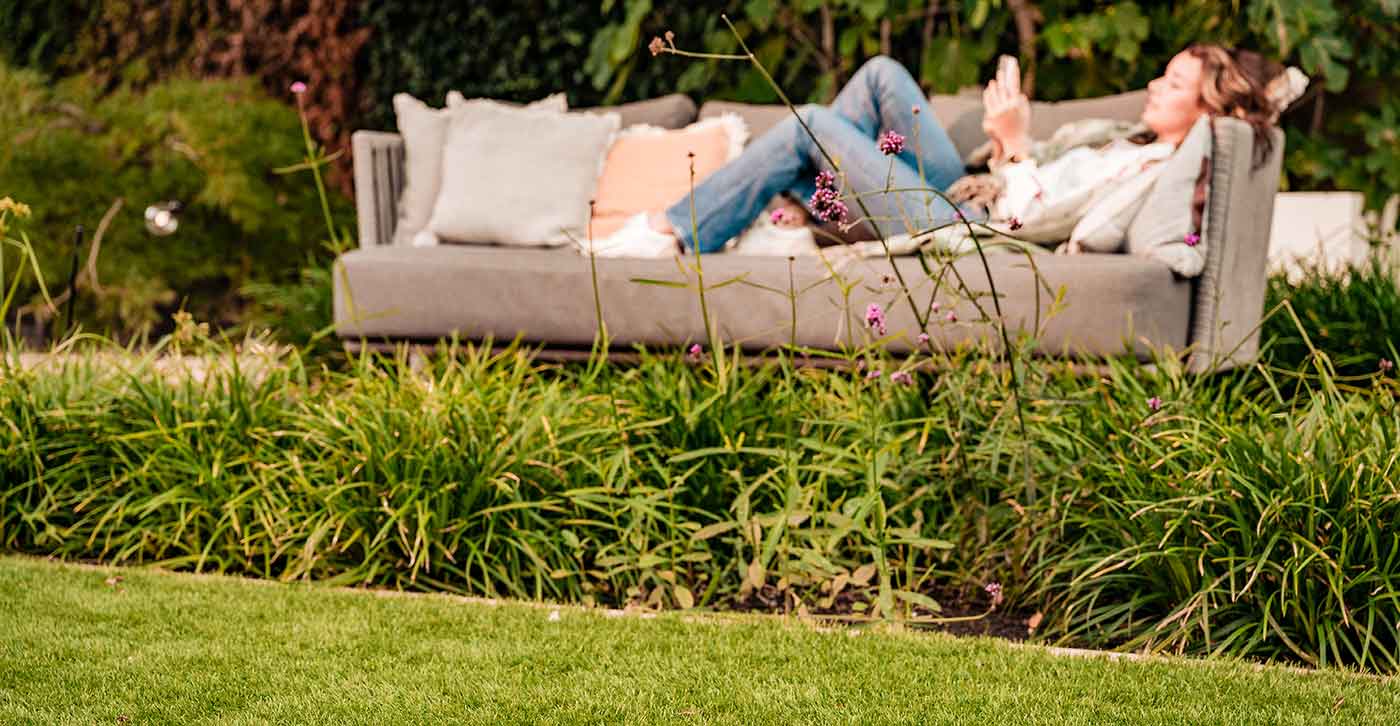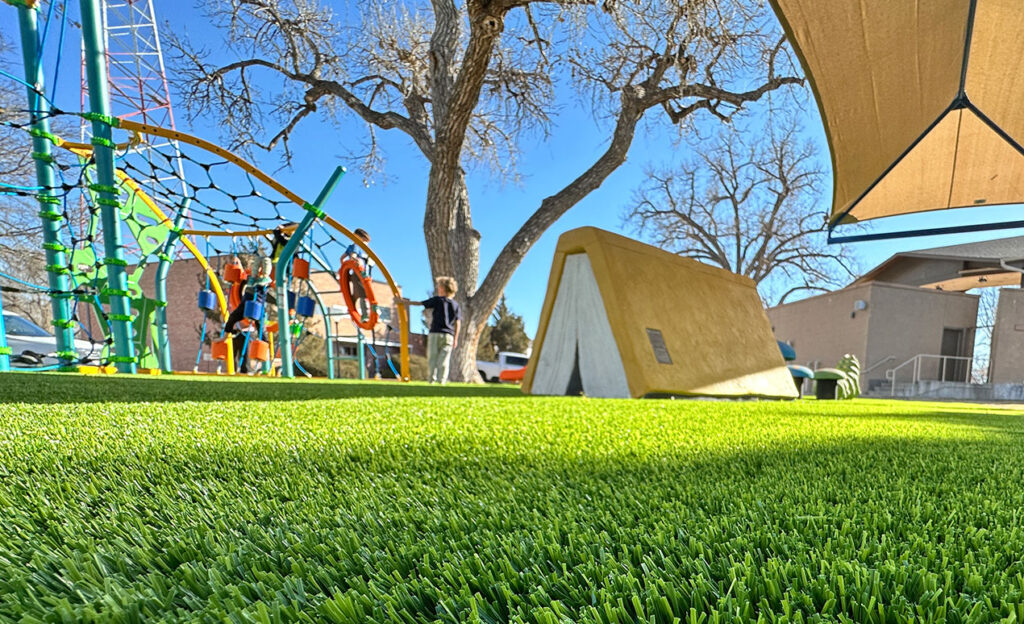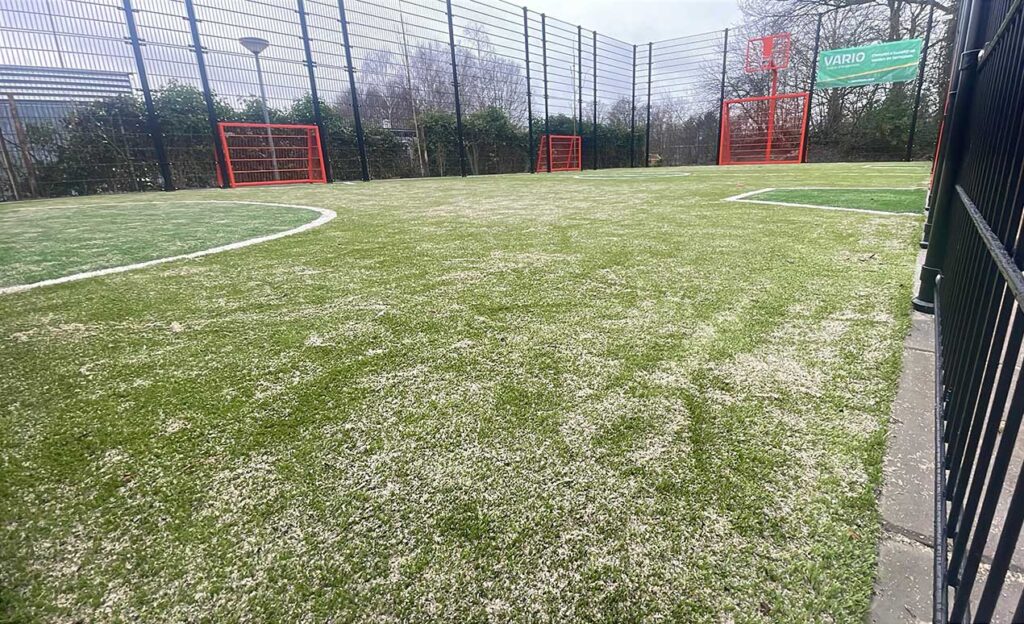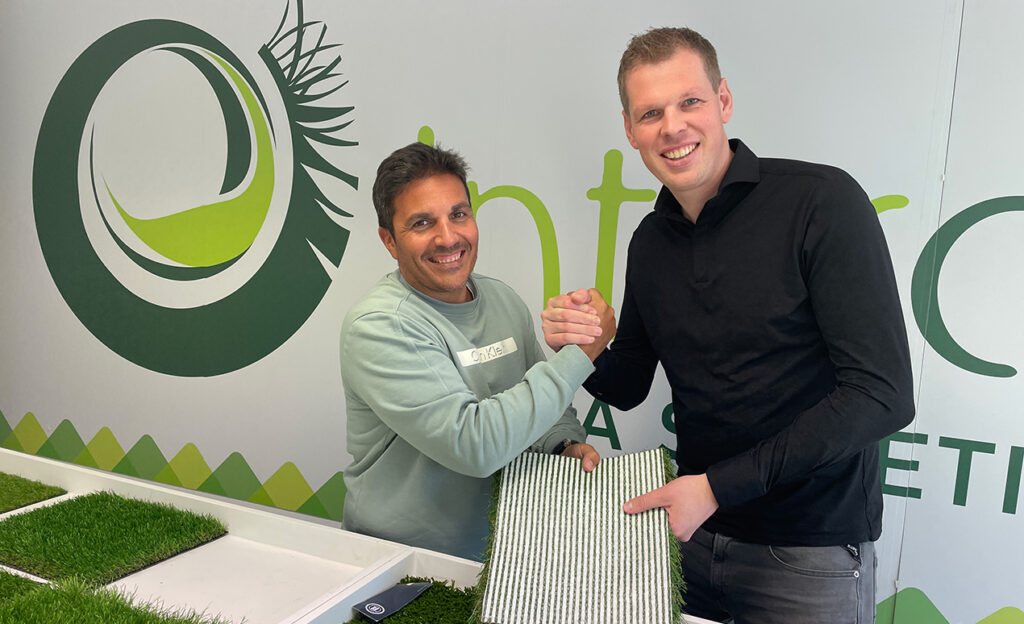In a world where sustainability is becoming increasingly important, the role of innovative products such as circular artificial grass cannot be underestimated. Artificial grass is widely known and used in gardens, sports fields and public spaces around the world. But not all artificial turf is created equal when it comes to environmental impact. Here we discover why circular artificial turf such as ONE-DNA™, made from polyethylene (PE), is a more sustainable choice and how it differs from other types of artificial turf that present challenges in recycling processes.
What is circular artificial grass?
Circular turf refers to turf that is designed to be fully recycled at the end of its life without any loss of quality. ONE-DNA™ artificial grass is an excellent example of how a single type of polymer (PE) not only extends the life of the grass but also facilitates recycling. This grass is manufactured in such a way that it can be easily converted into new raw materials for high-value applications after use.
Transparency through an EPD
With ONE-DNA™, we strive for full transparency in our production processes and environmental impact, which is supported by the Environmental Product Declaration (EPD). This document provides detailed information on the product’s lifecycle, from raw material extraction to final processing, and highlights our efforts to provide environmentally friendly and sustainable products.
Rigorous safety and sustainability testing
ONE-DNA™ artificial grass undergoes extensive testing to ensure safety and durability:
- Leaching tests: Confirm that the grass does not leach harmful substances that could affect soil quality. ONE-DNA™ products meet strict standards for soil quality, which is essential for both playgrounds and residential applications.
- Child safety EN 71-3: This standard tests the migration of certain elements and ensures that the artificial turf is safe for use by children. LimeGreen® ONE-DNA™ products have passed these tests, confirming that they are free of heavy metals and other hazardous substances.
- SVHC screening: Ensures the absence of Substances of Very High Concern (SVHC), which is critical for recycling and reuse of the material.
- Durability testing: These tests evaluate how well the artificial turf will withstand long-term exposure to the elements, allowing LimeGreen® to guarantee that its products will last up to 10 years without significant degradation.
The recycling challenges of multi-material artificial turf
Unlike circular artificial turf, traditional artificial turf is often made up of several types of materials, such as latex and various polymer blends such as PE & PP. The use of multiple material types in artificial turf complicates the recycling process for several reasons:
- Complexity of separation: Artificial turf made from a mixture of materials such as polyethylene (PE), polypropylene (PP) and latex requires complicated and costly separation processes for high quality recycling. Although these materials are recyclable, this rarely results in circular use, but often leads to downcycling into lower quality products, contrary to the principles of circular economy.
- Different melting points: These materials have different melting points, which means they cannot be processed at the same time in a standard recycling process. If they are melted together, the physical properties of the recycled plastics may be inconsistent and of lower quality, limiting the usability of the recycled material.
- Chemical incompatibility: Different polymers can be chemically incompatible, which means that mixing them during the recycling process can lead to degradation of the materials or the formation of unwanted by-products. This reduces the quality of the recycled product and may require additional cleaning steps.
- Environmental impact: The need to separate complex mixtures of materials can lead to increased energy consumption and waste generation during the recycling process. This goes against the principles of environmental friendliness and sustainability.
- Economic factors: The complexity and higher costs associated with separating and processing different materials can make it economically unviable to recycle traditional synthetic turf. As a result, less sustainable waste management methods such as landfill or incineration are often chosen.
- Regulations and standards: Recycling materials that have to comply with different regulations and standards can be more complex. For example, certain additives or treatments used in one of the materials may limit the reuse of the recycled product.
Advantages of mono-material synthetic turf
- Simpler recycling process: Because it is made from one type of material (polyethylene), it can be recycled more easily and efficiently without the need for complex separation techniques.
- Better quality after recycling: Mono-material retains its quality better when recycled, resulting in high quality reuse of the material. This avoids ‘downcycling’, where recycled materials are of lower quality.
- Reduced production waste: Mono-material production processes generally generate less waste because all components of the turf are made from the same material, which is more efficient in terms of material use.
- Reduced environmental impact: Using one type of material reduces the environmental footprint throughout the product’s lifecycle, from production to end-of-life.
Why choose circular turf?
By choosing Circular Turf, consumers are supporting a more sustainable world. The unique use of a single type of polymer not only facilitates the recycling process, but also ensures that the turf retains its value at the end of its life. Together, let us choose a greener future where our pitch is not only beautiful, but also environmentally responsible.

































